Ukraine’s Donbas Stumbling Blocks
During the Russo-Ukrainian war, Ukraine’s Donbas region became its main battlefield. In 2014, Russia’s hostilities started in Luhansk and Donetsk regions, resulting in parts of the regions remaining under Russian occupation until the full-scale invasion. After February 24th, 2022, both regions sustained a second and particularly devastating level of destruction. Donbas’s cities: Debaltseve, Mariupol, Bakhmut, Sievierodonetsk, Popasna, Lysychansk, Rubizhne, Avdiivka, still hold a salient position in the list of disrupted or completely destroyed cities of Ukraine. At the moment, the regions’ reconstruction challenges are difficult to comprehend due to the enormity of the devastation, the lack of accurate data, and the uncertainty of the future. This article aims to formulate a conceptual framework that can help make discussions about the future of Donbas more substantive and realistic. This framework is defined by four interrelated variables: security, economy, community, and identity.
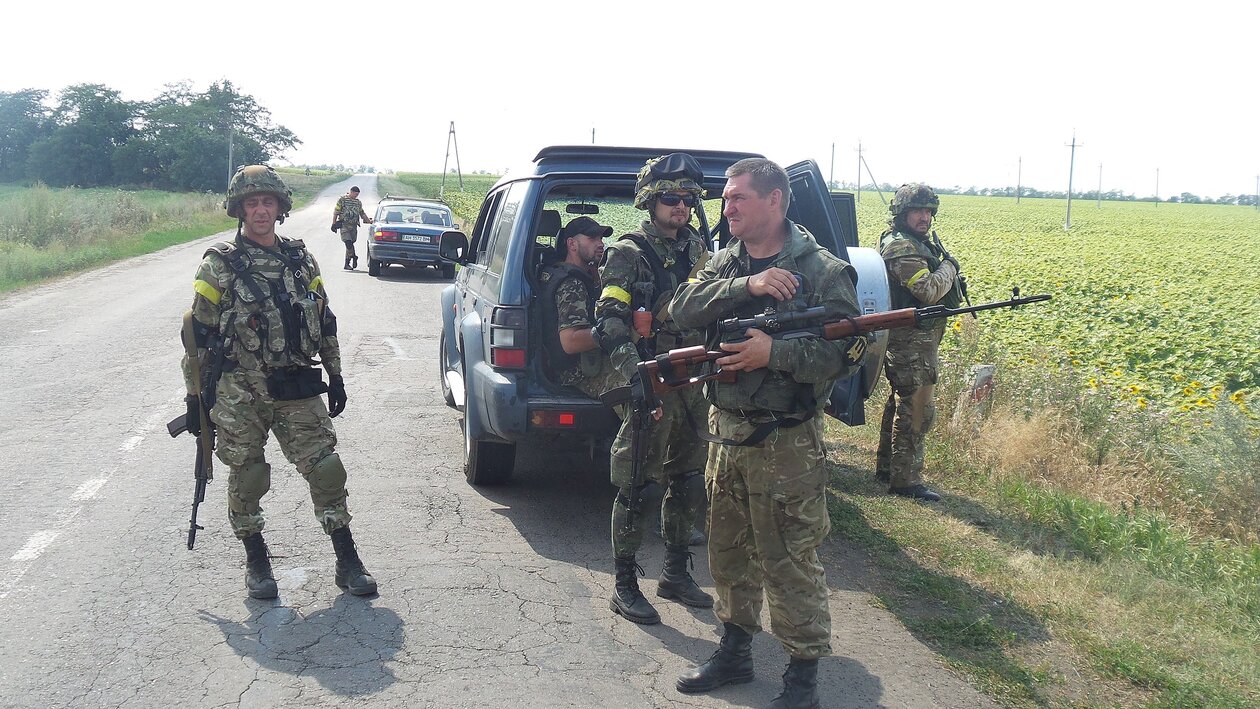
Ukrainian soldiers in Donbas, 2014. Photo: Ліонкінг, CC-BY-SA-4.0
I. Security: the militarized frontier
Security is a determining factor in the future of Donbas – and Ukraine, in general. The following considerations are based on the underlying optimistic assumption that Kyiv will eventually regain control of the entire territory of Ukraine within its 1991 borders. However, Ukraine’s restoration of its territorial integrity does not necessarily ensure security of the country. For instance, after fleeing Ukraine’s city of Kherson in November 2022, the Russian occupiers have been continuing subjecting the city and its surroundings to brutal shelling. The Russians shelled the liberated part of Kherson region 4,681 times only within three months, from December 2022 until March 2023. There are no guarantees that Donetsk and Luhansk regions will be spared the same destiny in the future.
Reliable security guarantees for Ukraine will be, first, the country’s accession to NATO, and second, the loss of Russia's objective ability to commit armed aggression. However, the prospect of achieving these two conditions does not look realistic, at least in the short- and medium-term. Therefore, even the successful completion of the ongoing Ukrainian counter-offensive operation will not eliminate high security risks for the Ukrainian regions, adjacent to the border with Belarus and Russia. Donetsk and Luhansk region will be part of a so-called ‘danger belt’ in Ukraine, stretching from the city of Lutsk, Volyn region, to the Black Sea city of Odesa. Hence, Donbas will continue to serve as an extended militarized frontier of the country for a long time. This fact will play a decisive role in determining the economic, demographic, and socio-cultural face of Luhansk and Donetsk regions. It is necessary to underline that this analysis applies to the regions’ general security situation and does not account for such overt risks as contamination of territories with mines and unexploded ordnances, or other consequences of the Russian invasion, including chemical, radiological, and other types of contamination of Donbas territories.
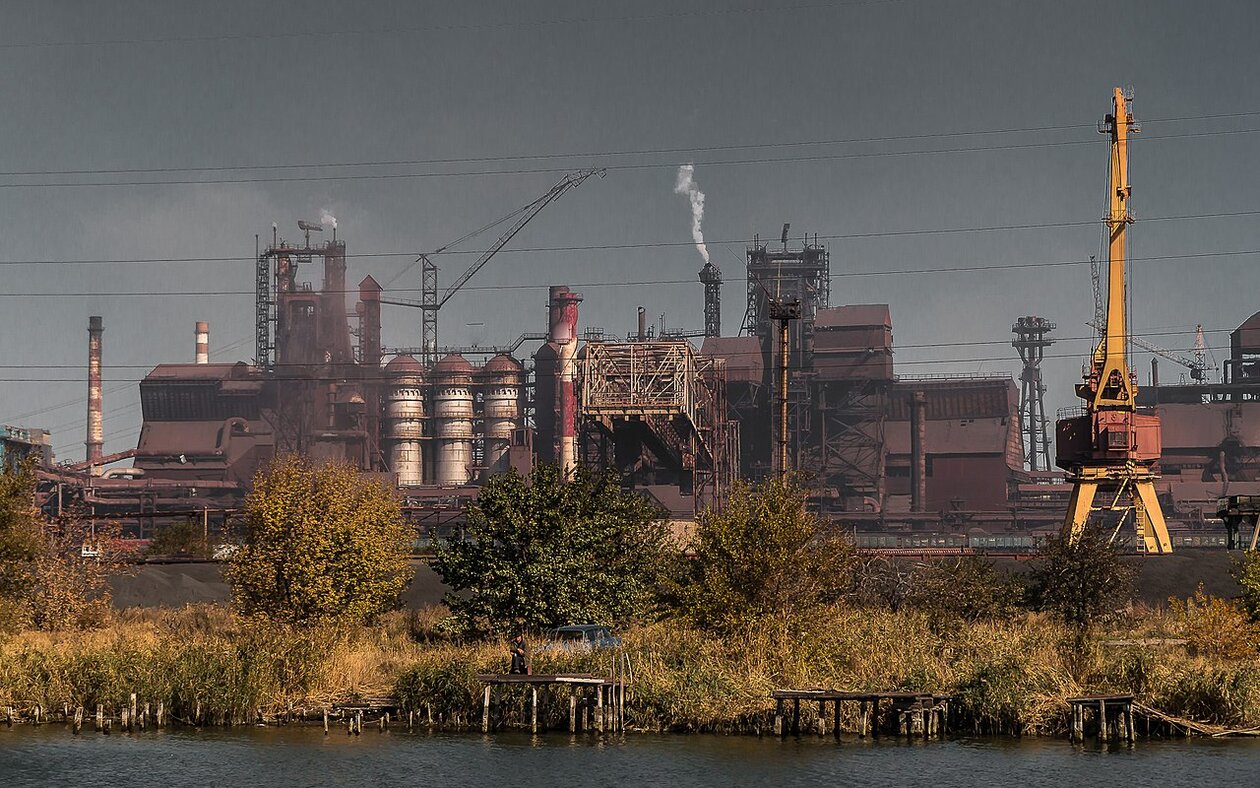
AzovStal steel factory before the war. Photo: YitzhakNat, CC-BY-2.0
II. Economy: final deindustrialization
Before turning to the economic aspect of Donbas's recovery, the region’s specifics should be emphasized. Donbas is an old industrial region historically formed around the coal and metallurgical industry that the Russian Empire developed in this area starting from the late 18th century. Three-quarters of the modern cities of Luhansk and Donetsk regions grew out of workers' settlements established near mines, factories, and railway stations with a view to serving the needs of the industry. During the Soviet era, Donbas specific characteristics has only intensified.
As any old industrial region, formed in the era of the intensified coal and steel production, Donbas was doomed to eventually face a crisis. In that respect, Donbas initially got lucky. Industrial crises of the 1960-70th did not affect the lives of the local population for a long time. It was possible due to the role the local industry played in the USSR’s planned economy. For this reason, Donbas nomenklatura elites effectively lobbied for the interests of their mining region in Moscow.
Donbas’s overripe problems cumulatively surfaced after the USSR collapse. During the first years of Ukraine’s independence, Donbas went through rapid and poorly controlled deindustrialization, which destroyed lifestyle of the local population. This deindustrialization was already painful due to the breakdown of established production chains, inadaptability of many Soviet enterprises to the market economy, and economic turbulences of the 1990s. Still, in addition to that, local oligarchic elites used the process of Donbas deindustrialization to enrich themselves by destroying enterprises. The most known representative of Donbas oligarchs’ interests was Ukraine’s former president Viktor Yanukovych. The Donbas region could have benefited from reforms aimed at creating its new economic profile. Yet, they never materialized. As a result, Donbas has acquired the distinct characteristics of a depressed region even before the war of 2014, with its economy heavily depended on subsidies from the national budget.
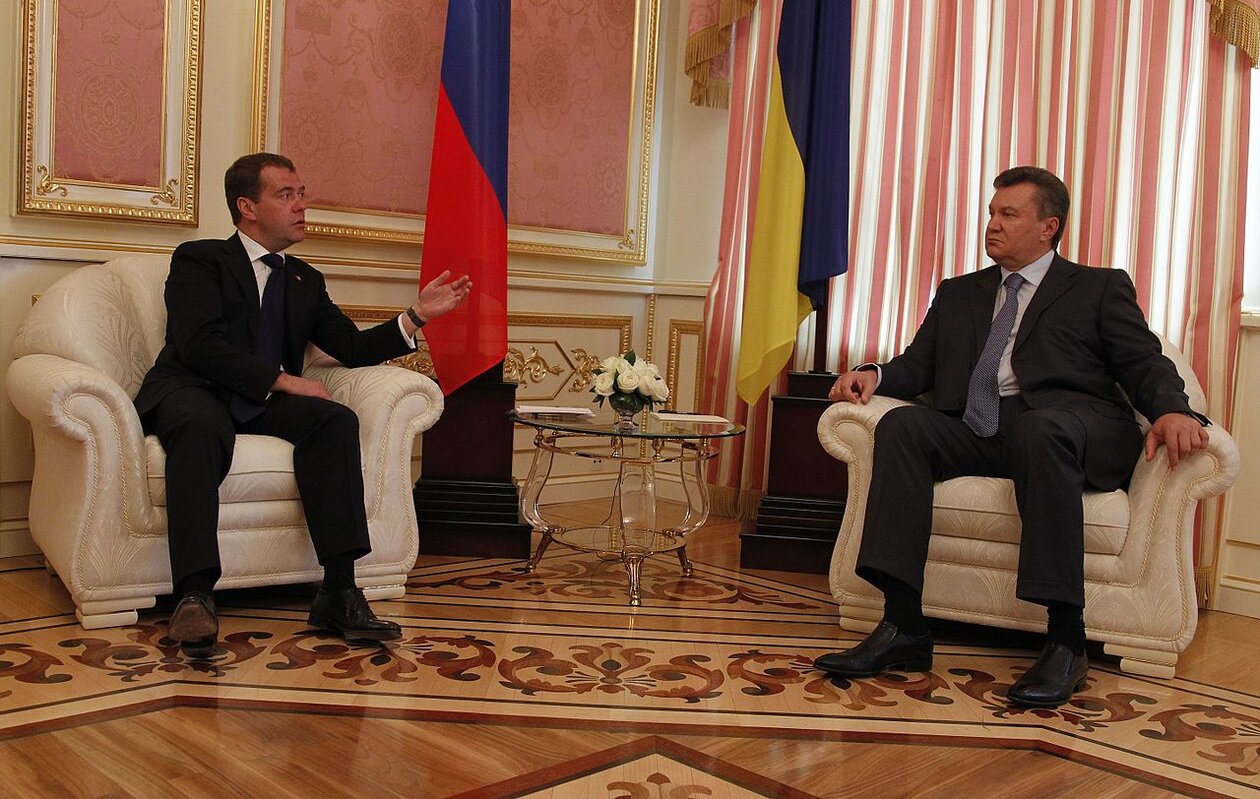
Russia's president Dmitry Medvedev and Ukraine's president Victor Yanukovich, 2013. Photo: Government.Ru, CC-BY-4.0
The first Russian invasion of 2014 prompted the final episode of the Donbas deindustrialization process, while the full-scale invasion of 2022 put the last nail into it. Military fighting has destroyed most enterprises, such as the flagship of the Ukrainian steel industry, the legendary Azovstal. Other companies, that happened to remain in the Russia-occupied territories of the so-called ‘people's republics,’ were mostly looted by the occupiers or relocated to Russia. This process started already in 2014-2015, but the outbreak of the full-scale war turned this phenomenon into a widespread plunder. Enterprises located in the Ukraine-controlled frontline territories left the Donbas region for relative safety of central and western Ukraine. In March 2022, the Ukrainian government launched a relocation program for businesses located in the frontline areas. By August 2022, over 160 companies from Donetsk and Luhansk regions have benefited from this initiative, while the total number of relocation applications from Donbas reached 335 during this period.
Prior to the war, discussions of the Donbas future were accompanied by the recollection of success stories from the German Ruhr area and other coal and steel regions of Europe. These European territories were praised for seemingly accomplishing the introduction of new economic models in post-crisis periods. Russia’s war against Ukraine, especially the full-scale invasion of 2022, has deflated the power of these optimistic examples. In July 2022, Ukraine’s parliament, the Verkhovna Rada, passed a law adjusting Ukraine's regional development policy to the country’s new circumstances. In particular, the law has created four new classification types of communities and territories: recovery areas; economic growth poles; areas with special conditions for development; and sustainable development areas. Most of Donbas territories will likely belong to the third category, i.e., to areas that ‘have a low socio-economic level or restrictions on the use of the territory's potential."
For evident reasons, Ukraine has not yet developed a strategy for the restoration of Donbas. Moreover, large-scale reconstruction projects require significant investment and, hence, are unlikely to be implemented as long as the region remains under the threat of repeated armed aggression. Prior to Ukraine’s independence, Donbas used to serve as a strategically important industrial region for both the Romanov empire and the USSR. Since the late 18th century, it was located relatively far from borders, deep into the rear land of both the Czarist empire and the USSR. But in 1991, Donbas became Ukraine’s borderland, adjacent to the territory of an aggressive neighbor, and will continue to serve as such even after all the Russia-occupied territories of Ukraine are liberated.
Due to this new geographic reality, Donbas’s new local economy will most likely be based on agriculture and, in particular, production of raw goods, which does not necessitate establishing industrial processing facilities on site. As for the coal industry, most of Donbas mines are either destroyed, looted, or unprofitable. Hence, they may open way to green energy, as local climatic conditions are favorable for solar and wind energy production. However, these are only theoretical speculations. As of now, there is only one clear understanding: Donbas will no longer be a region with high economic power, let alone the industrial base of Ukraine, in the foreseeable future.
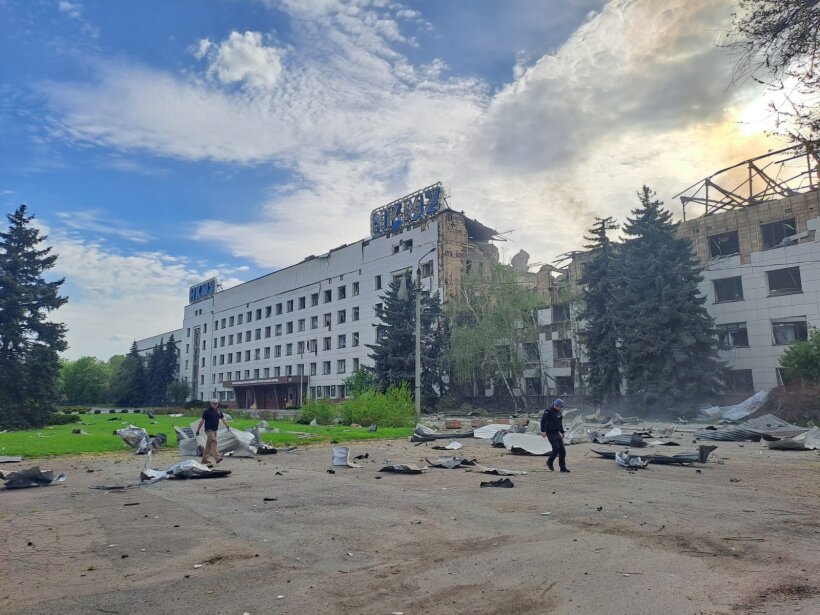
Kramatorsk Machinery Factory destroyed by Russian shelling, 2023. Photo: Sneeuwschaap, CC-BY-4.0
III. Community: conservation of depopulation
In post-1991 Ukraine, the demographic situation in Donbas developed in line with other country-wide negative trends: there was a gradual reduction and "aging" of the population. By early 2014, 2.2 million people lived in Luhansk region, with 4.3 million living in Donetsk region. Russia’s invasion, occupation, and an outbreak of hostilities prompted a massive outflow of people from these regions. There is an abundance of quantitative assessments of this outflow, provided both by the official authorities, NGOs, and international organizations. Due to the shortage of available data, these numbers represented estimates, rather than hard facts, and, hence, were unreliable to varying degrees. Russia’s full-scale invasion further dramatically worsened the on-the-ground situation. For the same reason, any assessment of the current demographic situation in the regions is faulty. This can only be accomplished after the de-occupation of Donbas.
At the moment, only one general assessment is reliable: the Russo-Ukrainian war has prompted a large-scale depopulation of Donetsk and Luhansk regions. ‘Fortunately,’ most of these people are refugees and internally displaced persons, not dead or deportees (despite Russia’s mobilization campaigns conducted in the occupied Donbas territories, whose recruits were killed during the storming of Bakhmut and other cities in the regions). Still, Donbas demographic losses are not of a temporary nature. There are a few reasons for that. First, the deficit of security will continue to weigh on Donbas for a longer time. Second, a large number of local residents, even if willing to come back, will simply have nowhere to return to, given the massive scale of destruction of housing and infrastructure. The initial pace and scale of reconstruction will not suffice due to limitations imposed by both Ukraine’s financial capacity and investment feasibility in the frontline areas. Third, the realities of the militarized frontline will not be able to facilitate the rapid recovery of the local economy required to meet the needs of the mass of potential returnees. Therefore, to achieve a Donbas population increase to 6.5 million will likely remain an unattainable objective for a long time.
Donbas repopulation is also unlikely to become a leading government priority, given the security and economic conditions of the region. This might be why the housing for IDPs, that is currently being built in Ukraine, is located in its central and western regions. Such a solution presents a simpler and more effective way to solve the housing problem of IDPs, as opposed to indefinitely postponing the restoration of destroyed housing and infrastructure in the abandoned cities of Donbas. Moreover, a massive return of residents to the region with an unstable security situation and a weak local economy should not be encouraged. The main source of Donbas repopulation will likely be people carrying out military service on the militarized frontier, involved in infrastructure rebuilding and in restoration of the local economy. To a certain extent, future Donbas repopulation could be compared with the population processes of the 16-18th centuries, when military and agricultural colonists played a key role in forming future Donbas.
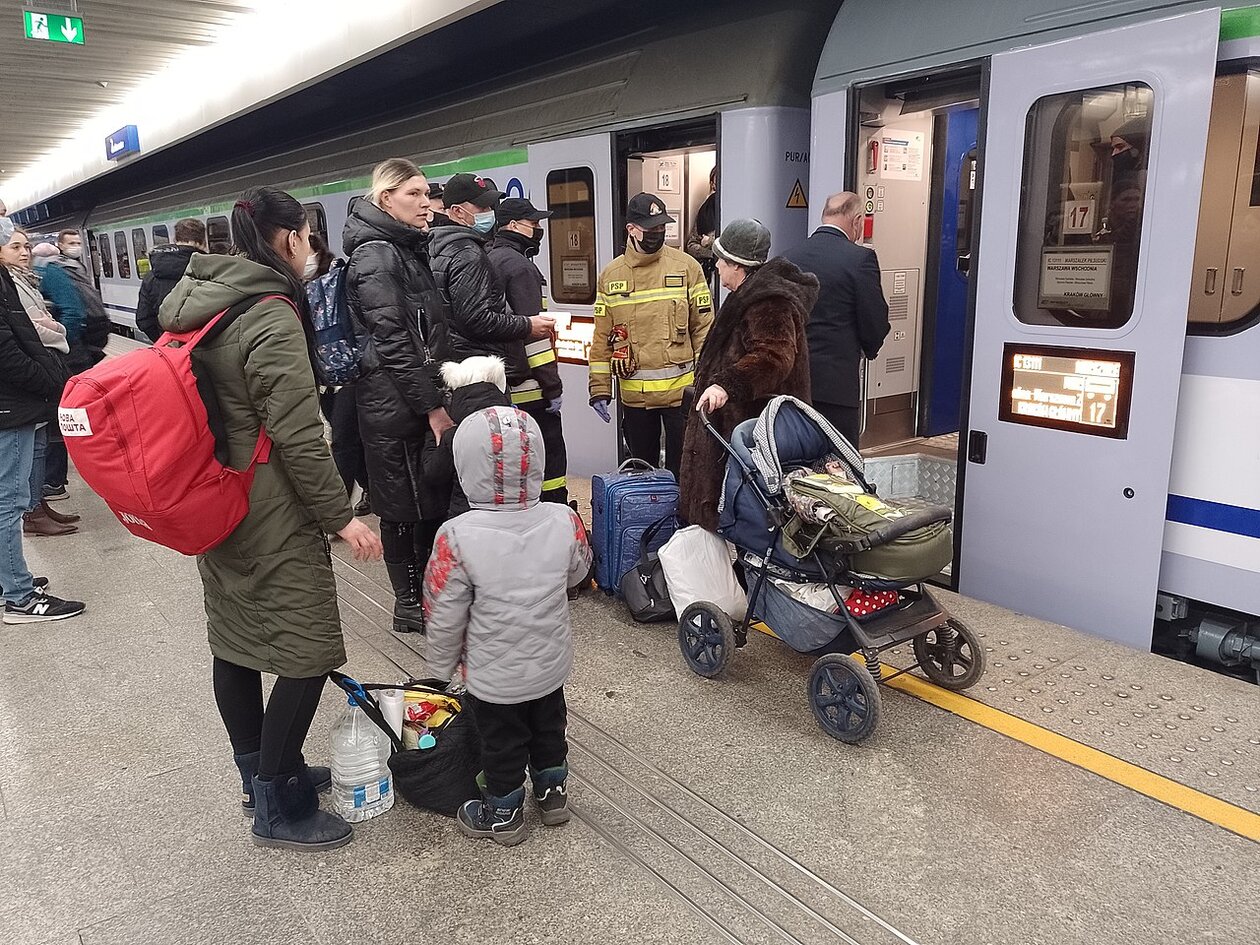
Ukrainian refugees in Warsaw. Photo: Kamil Czaiński, CC-BY-4.0
IV. Identity: a melting pot
When thinking about the future of Donbas, a vision of its new regional identity raises the most difficult questions. In general, the northern districts of Luhansk region comprise the historical territory of Slobozhanshchyna, while the southern districts of Donetsk region form the Pryazovia territory. Due to a combination of historical circumstances, the coal and metallurgical industry became the dominant factor in shaping the identity of Donbas. This identity was partially an artificial construct created by Soviet ideologues who praised Donbas as a showcase of Stalinist industrialization and its inhabitants as the vanguard of the proletariat. Hence, it is not surprising that the regional deindustrialization has led to a deep crisis of the local identity. Taking advantage of this existential crisis, pro-Russian Ukrainian politicians, for instance, former president Viktor Yanukovych, as well as Russian politicians, sabotaged the integration of Donbas residents into the Ukrainian cultural and political community. This became one of the main reasons why radical pro-Russian and separatist slogans managed to find their target audience in Donbas in 2014.
After 2014, an already symbolic regional community of Donbas has split even further. Those who remained under Ukrainian control began the slow process of linguistic and general Ukrainization. Those who happened to be in the Russia-occupy zone were subjected to Russian social, cultural, and political experiments. However, Russia-installed authorities of the so-called Luhansk and Donetsk Peoples’ Republics have unlikely managed to already form appropriate identities among their ‘citizens.’ Consequently, only deepening existential disorientation should be expected. Still, any discussions about the worldview and attitudes of people who have lived under Russian occupation since 2014 can only have substance after the liberation of these territories and the conduct of relevant sociological research.
Migration processes, that are expected to partially reshuffle the Donbas population, could cause even more confusion. Although it is yet unclear who will repopulate these regions, they will certainly bring their own identities to the territories. Hence, a new identity of the liberated Donbas will likely mirror how the region looked like at the beginning of industrialization: a melting pot where representatives of different ethnic, social, and religious groups met. In the 19th century, the key denominator of the Donbas identity was joint work in the melting pot of industrialization. In the 21st century, these people will likely be united by collective life and work on the militarized frontier.
As of now, the vision of the Donbas future is blurred. The proposed conceptual framework seeks to reduce the room for uncertainty and to identify the key issues that should be addressed in discussions about the future of this long-suffering region, Donbas.
Did you like this article? Donate and support the European Resilience Initiative Center: